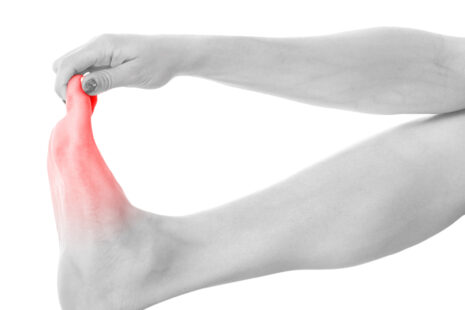While home remedies may help alleviate symptoms of a rotator cuff injury, it’s essential to keep in mind that severe or persistent pain should be evaluated by a healthcare professional to determine the appropriate treatment.
Here are some home remedies that may provide relief for mild to moderate rotator cuff pain…
- Rest – Resting the affected shoulder is crucial to allow the injured tissues to heal. Avoid activities that aggravate the pain, such as lifting heavy objects or performing overhead movements, and give the shoulder adequate time to rest and recover.
- Ice Therapy – Applying ice to the affected shoulder can help reduce pain and inflammation associated with a rotator cuff injury. Use an ice pack wrapped in a thin cloth and apply it to the shoulder for 15-20 minutes several times a day, especially after activities or exercises that exacerbate the pain.
- Heat Therapy – Heat therapy, such as warm compresses or heating pads, can help relax the muscles and improve blood flow to the injured area, promoting healing and reducing stiffness. Apply heat to the shoulder for 15-20 minutes at a time, several times a day, as needed for pain relief.
- Over-the-Counter Pain Medications – Nonsteroidal anti-inflammatory drugs (NSAIDs) such as ibuprofen (Advil, Motrin) or naproxen (Aleve) can help reduce pain and inflammation associated with a rotator cuff injury. Follow the dosage instructions on the label and use them as directed by a healthcare professional.
- Gentle Stretching and Range of Motion Exercises – Performing gentle stretching and range of motion exercises can help improve flexibility, mobility, and function in the shoulder joint. Start with gentle movements and gradually progress to more advanced exercises as tolerated, avoiding any movements that cause pain or discomfort.
- Strengthening Exercises – Once pain and inflammation have subsided, incorporate strengthening exercises targeting the muscles of the rotator cuff and shoulder girdle to help stabilize the joint and prevent future injuries. Examples of strengthening exercises include external rotation exercises, scapular stabilization exercises, and rows.
- Posture Correction – Poor posture can contribute to shoulder pain and dysfunction. Focus on maintaining good posture throughout the day by sitting and standing tall, keeping the shoulders relaxed and the spine aligned. Avoid slouching or rounding the shoulders forward, especially during prolonged periods of sitting or computer work.
- Sleeping Position Modification – If shoulder pain disrupts your sleep, try sleeping on your back or on the opposite side with a pillow supporting the affected arm to reduce pressure on the injured shoulder. Avoid sleeping on the affected shoulder, which can exacerbate pain and discomfort.
- Massage and Self-Myofascial Release – Gentle massage and self-myofascial release techniques using a foam roller or massage ball can help relax tight muscles, improve circulation, and reduce muscle tension in the shoulder and surrounding tissues.
It’s important to note that while home remedies may provide temporary relief for rotator cuff pain, they are not a substitute for proper medical evaluation and treatment. If you experience severe or persistent shoulder pain, weakness, or limited range of motion, consult with a healthcare professional, such as a doctor or physical therapist, for a thorough evaluation and personalized treatment recommendations. They can help diagnose the underlying cause of your symptoms and develop a comprehensive treatment plan to address your specific needs and goals.




